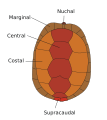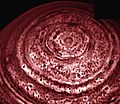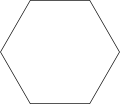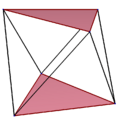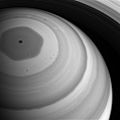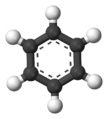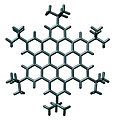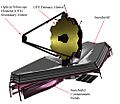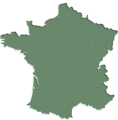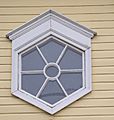Hexagon facts for kids
A hexagon is a polygon with six straight sides and six corners. Think of it like a shape with six edges! Hexagons are special because they can fit together perfectly without any gaps. This is called a tessellation. Because of this, you often see them used for tiling floors. Hexagons are also very common in nature. For example, the honeycombs you find in beehives are made of tiny hexagons.
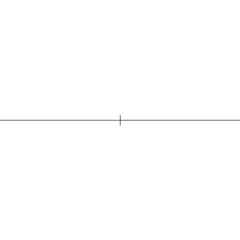 |
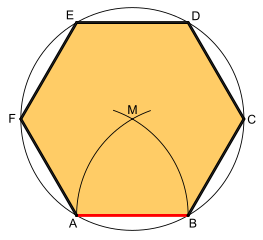 |
|
|
Click the image to see how to draw a perfect hexagon using a compass and straightedge. This method was shown by Euclid a long time ago!
|
This image shows how to draw a hexagon when you know the length of one side. You draw circles from the ends of the side. Where they meet is the center of a larger circle that goes around the hexagon. Then you just mark off the side length four more times on that circle!
|
Contents
Hexagons: In Nature and Human Creations
Hexagons are all around us, both in the natural world and in things people build. Their strong, efficient shape makes them very useful.
Hexagons in Nature
Nature loves the hexagon! It's a very stable and efficient shape.
- Beehives: One of the most famous examples is the honeycomb inside a beehive. Bees build these hexagonal cells to store honey and pollen. This shape is super strong and uses the least amount of wax for the most storage space.
- Turtle Shells: If you look closely at a turtle's carapace (its shell), you might see hexagonal patterns in the scutes, which are the bony plates that make up the shell.
- Saturn's North Pole: Believe it or not, the planet Saturn has a giant, mysterious hexagonal cloud pattern around its north pole! It was first seen by the Voyager 1 spacecraft and later confirmed by the Cassini probe.
- Snowflakes: Every snowflake is unique, but they all share a common hexagonal structure. This is because of how water molecules arrange themselves when they freeze.
- Basalt Columns: Have you ever seen pictures of the Giant's Causeway in Ireland? It's famous for its tall, perfectly shaped columns of rock. These are naturally formed basalt columns, and many of them have hexagonal cross-sections. They form when lava cools very slowly.
Hexagons in Human Designs
People have learned from nature and use hexagons in many ways too.
- Floor Tiles: Just like we mentioned, hexagons fit together perfectly. This makes them a great choice for tessellating floors, creating beautiful and strong patterns. You can see examples of hexagonal floor tiles in old buildings, like those in Rome.
- Buildings and Structures: Sometimes, buildings are designed with hexagonal shapes for strength or unique looks. For example, Fort Jefferson in Dry Tortugas National Park is a large hexagonal fort. The Hexagon Theatre in Reading, Berkshire, is also shaped like a hexagon.
- Science and Technology:
- The James Webb Space Telescope has a giant mirror made of 18 hexagonal segments. This design allows the mirror to be very large and powerful, yet still foldable for launch.
- The material graphene has a structure made of carbon atoms arranged in a perfect hexagonal grid. Graphene is super strong and light, and scientists are very excited about its potential uses.
- In chemistry, some molecules, like Benzene, have a hexagonal ring shape. These are called aromatic compounds.
- Games: Some board games, like hexagonal chess, use hexagonal spaces instead of squares, which changes the way pieces can move and interact.
-
A beehive honeycomb
-
The scutes of a turtle's carapace
-
North polar hexagonal cloud feature on Saturn
-
Naturally formed basalt columns from Giant's Causeway in Ireland
-
An aerial view of Fort Jefferson in Dry Tortugas National Park
Related pages
Images for kids
-
A regular skew hexagon seen as edges of a triangular antiprism.
-
The ideal crystalline structure of graphene is a hexagonal grid.
-
Benzene, the simplest aromatic compound with hexagonal shape.
-
The James Webb Space Telescope mirror is composed of 18 hexagonal segments.
-
Metropolitan France has a vaguely hexagonal shape. In French, l'Hexagone refers to the European mainland of France.
-
The Hexagon, a hexagonal theatre in Reading, Berkshire
-
Pavilion in the Taiwan Botanical Gardens
See also
 In Spanish: Hexágono para niños
In Spanish: Hexágono para niños



